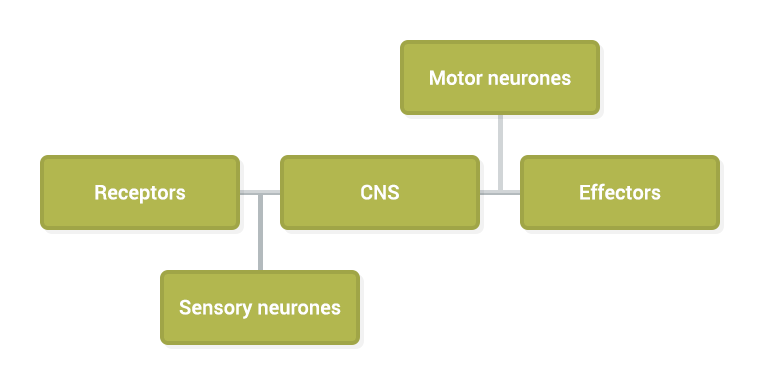The Nervous System
Handy hint!
This system allows messages to be sent around the body in order to control its actions and movements.
Nervous System diagramThe Nervous System

The nervous system helps our body to respond to the world around us by sending messages to our brain, which in turn sends directions to our organs telling them what to do.
The nervous system is divided into two parts:
- The central nervous system, which is the brain and spinal cord
- The peripheral nervous system, which is made up of nerve cells (known as neurones) that help to carry information to and from the central nervous system.
Click to explore this diagram and see how the parts of the nervous system work together to send messages around the body.
Receptors
They are groups of cells that are able to detect (or sense) and respond to a change in the environment – this change is known as a stimulus. Your sense organs – skin, tongue, nose, eyes and ears – contain receptor cells that respond to specific stimuli, such as temperature, texture, sound, light, tastes, smells, etc.
Sensory neurones
In order to function effectively, the nervous system relies on tiny nerve cells called neurones. The brain has billions of neurones, which perform various tasks. For example, the sensory neurones take information from the receptors (eyes, ears, nose, tongue and skin) to the brain.
CNS
When a message comes into the brain from receptors anywhere in the body, the brain decides how the body needs to react and sends messages to the relevant part (or parts) of the body.
Motor neurones
The motor neurones carry messages away from the brain and back to the rest of the body. For example, if you accidentally touch something that is very hot, the nerves in your skin send a message of pain to the sensory neurones in your brain. The brain then sends a message back through the motor neurones, telling the muscles in your hand to pull away.
Effectors
Effectors are the parts of the body – such as muscles – that act or move in response to a particular stimulus.

